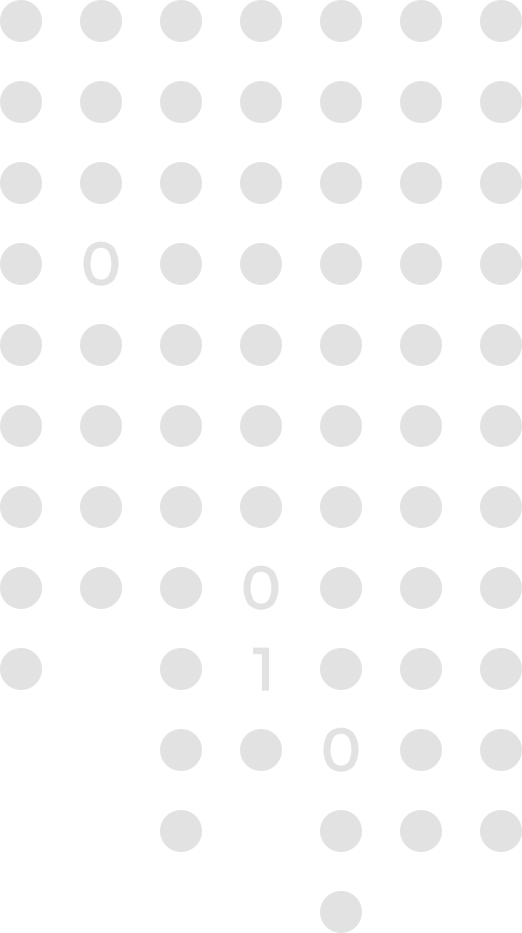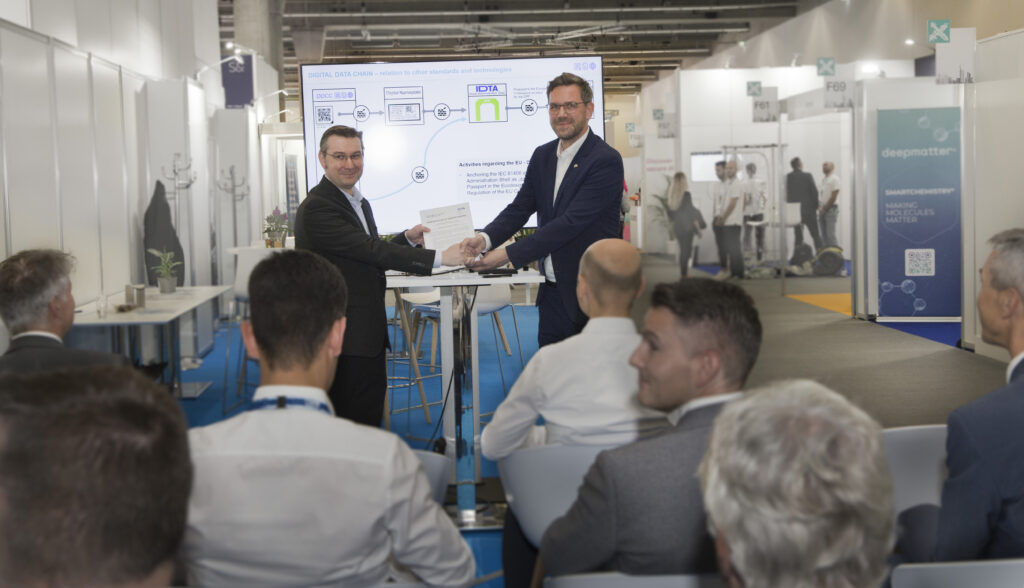
Industrial Digital Twin Association and Digital Data Chain Consortium jointly advance Digital Twins for the Process Industry
Cooperation partners Digital Data Chain Consortium and Industrial Digital Twin Association integrate established standards and norms into the Asset Administration Shell
Digital Data Chain Consortium (DDCC) and Industrial Digital Twin Association (IDTA) signed a Memorandum of Understanding at the ACHEMA trade fair in Frankfurt am Main on 24 August 2022. The aim of the cooperation is to jointly build a global ecosystem for interoperable Digital Twins for industry based on the Asset Administration Shell (AAS).
The partnership will advance the standardisation and dissemination of AAS in order to be able to exchange data easily and automatically in the future:
- Positioning of the AAS as the standard data carrier for the Digital Product Passport according to the Ecodesign for Sustainable Products Regulation (ESPR) of the EU Commission.
- IEC 61406 position as mandatory minimum requirement for “object/product identification” for the Digital Product Passport according to the ESPR of the EU Commission.
- Transfer of VDI Guideline 2770 “Digital manufacturer information” and joint further development of the corresponding AAS submodel (“Handover Documentation”, see https://industrialdigitaltwin.org/en/content-hub/submodels) into an international standard (ISO/IEC)
- Marketing for the use of IEC 61406 for automatic identification of physical objects as an anchor point for the AAS.
- Obligatory use of the AAS API, which guarantees integrity and secure data access at object level.
For this purpose, the regular exchange of experience and technical coordination with renowned companies from the electrical and process industries will be further expanded.
“In the cooperation with the DDCC, we regard an ideal opportunity to establish the Asset Administration Shell as a basis for information exchange platforms. We can benefit from the expertise of the DDCC boards in the field of industrial application of the standards for automatic identification and digital manufacturer information interacting with the AAS. Working together, we will ensure that information about assets is compatible, ensuring seamless access to information across the lifecycle of components and assets. We look forward to the mutual process of implementation,” says Meik Billmann, General Manager at IDTA.
Christoph Attila Kun, manager of the DDCC, affirms: “Through the concept of submodels, the AAS offers the possibility of adapting the Digital Twin of a product to the respective requirements in a very flexible, yet standardised way. By combining the competences of IDTA and DDCC, new submodels and standards can be developed and the AAS can be distributed as a cross-industry technical solution for the Digital Twin, with the common goal of establishing the AAS as the technical solution for the EU Digital Product Passport. We look forward to working with IDTA to further advance digitisation in industry.”

The interoperable Digital Twin allows all properties of an object, from the individual component to the entire machine, to be mapped in a standardised form and enables the exchange of information and data. The Asset Administration Shell is used to implement the digital twin for Industry 4.0. This technology is used to represent the entire life cycle of products, devices, machines and plants.
